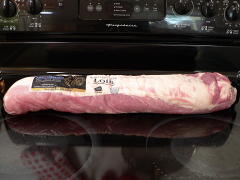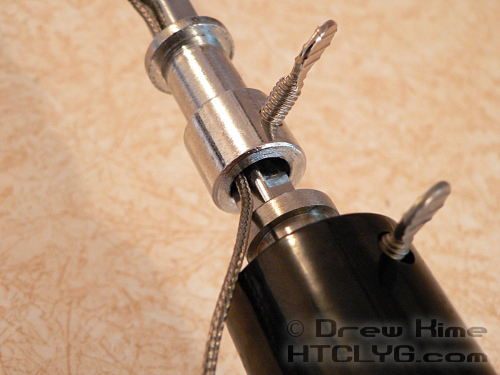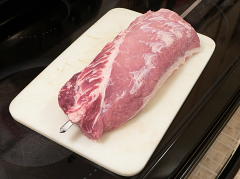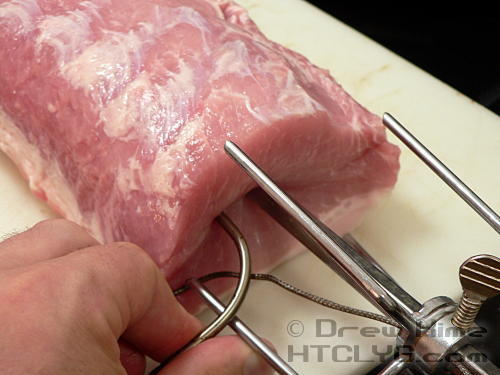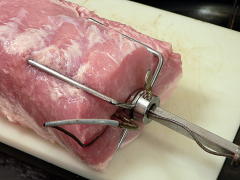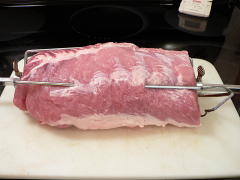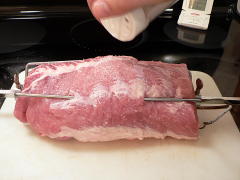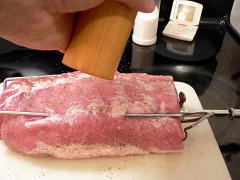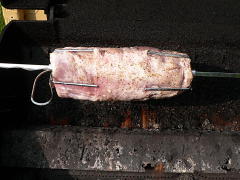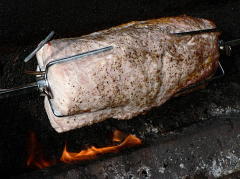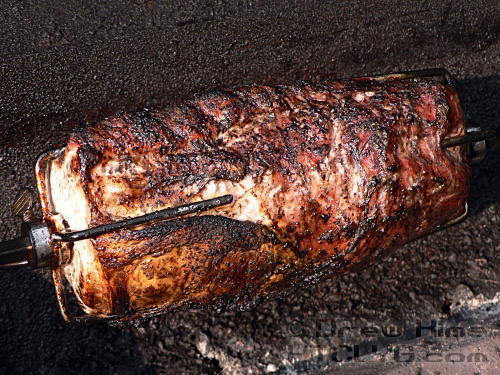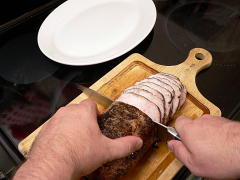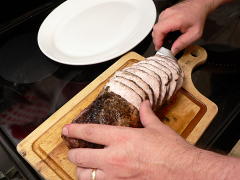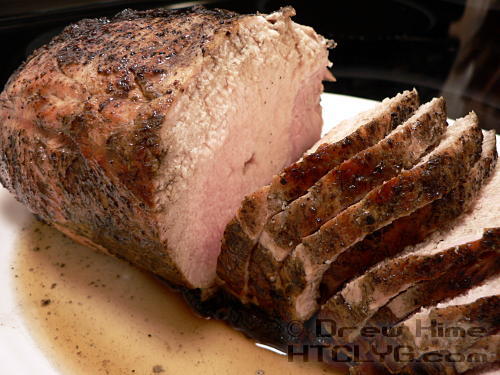By now I should know better than to criticize my grill behind its back. Yesterday Barb said that she was getting a new grill for her birthday to replace her “falling apart grill”. I told her that mine was also not doing well, specifically mentioning that the splatter shield looked more like a screen.
Well, that’s just tempting fate, don’t you think? Instead of heating up and vaporising grease as it dripped, like it’s supposed to do, it just flared up and got all smoky. I wasn’t trying for smoked pork, but that’s what I got. Sort of. It’s not the prettiest pork loin I’ve ever done, but it tasted good. Time to hit the Home Depot and get some new parts for the grill.
Oh, and here’s how to make it. Make sure your grill is cleaner than mine and it’ll be perfect.
Start with one whole pork loin. This one was about 7-1/2 pounds.
Rinse it and pat it dry, then cut into two or three more-manageable pieces.
Run the probe from your digital thermometer through the sleeve for the rotisserie rod, and one of the forks, then put the rod through. Don’t tighten up the screws yet.
This way you can have the probe in the meat while it’s going around, and the wire will come out of the grill.
Hold the rod parallel to the table, and slide it all the way through the pork.
Insert the probe into the end of the pork, parallel to the rod, about a half-inch away from it. Make sure the tip of the probe isn’t touching the rod.
Slide the fork up against the end of the pork, making sure you’ve taken up all the slack in the probe wire.
Now tighten the screws and add the fork on the other side.
Coat generously with salt and pepper.
Place the rod over the fire. It’s best to have the meat centered over one of the burners, so you can turn the other burner up or down to control the heat. Attach the thermometer to the handle with a rubber band, and plug in the probe wire. Set it for 135°, though you don’t want to pull it until it’s about 140°. You want to give yourself a little heads-up that it’s almost done.
You can see in the pictures above that the splatter shield is nearly disintegrated. So instead of vaporising the grease I got flareups.
Nothing I tried stopped the flareups and the smoking, so I ended up with a very smoky pork loin, with crispy edges where the fire kept licking at it.
Let it rest for 10 minutes before pulling out the probe or the rod. If you pull them right away, all the juice inside will run out through the holes. Once the temperature evens out — it should top out at about 145° — you can pull them and start slicing. The thinner you slice, the more tender it will be.
(If you’re a home-ec teacher, don’t tell me I shouldn’t pick up the meat with my knife. I’ve been doing it for years and I’m not going to change now. I am a bad example for your children.)
And here is the somewhat-smoked, rotisserie-grilled, still-amazingly-tender pork loin with a delicious crispy crust.
And that’s it.

